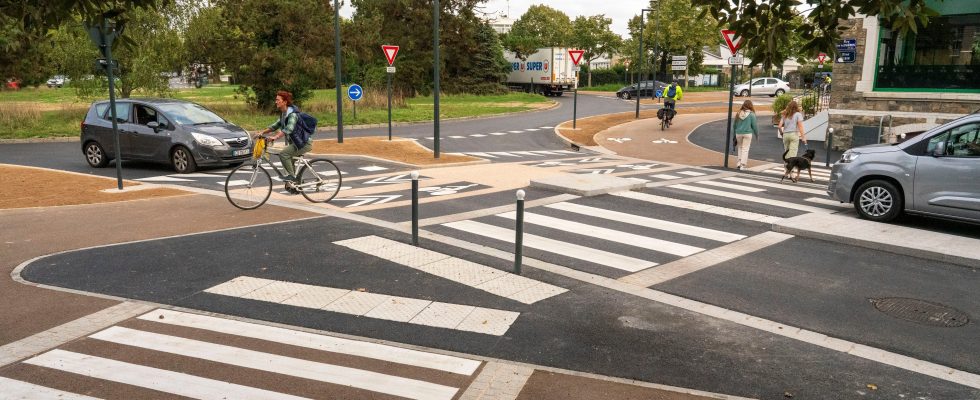Spectacular ! At the beginning of October, the metropolis of Rennes finished redevelop the Gayeulles roundaboutgateway to the northeast of the administrative capital of Brittany, frequented by more than 13,000 vehicles per day. A “Dutch-style” layout intended to promote user safety: reduction of the road ring, creation of two-way cycle lanes separated from the roadway by vegetation, development of raised pedestrian platforms… An investment of more than half a million euros in order to “put the car back in its rightful place and give space back to soft mobility,” summarizes ecologist Valérie Faucheux, deputy delegate for mobility and travel.
A winning strategy: Rennes has just won first place in the ranking of walkable cities with more than 200,000 inhabitants, ahead of Strasbourg and Nantes. This barometer, organized for the second year by the “Place aux pedestrians” collective, evaluates the walking experience of 70,000 respondents within their respective municipalities. A result which hardly surprises Françoise Rossignol, president of the Club of cycleable and walkable cities and territories, while the prefecture of Ille-et-Vilaine was already included in the top 3 cycling cities : “With each road development, we sense a global reflection here to make room for pedestrians, bicycles, public transport and individual cars, in that order.”
“Mobility is a matter of complementarity. If pedestrians do not feel safe, they will not take public transport and will favor the car,” confirms Valérie Faucheux. A key issue. Since the opening last year of the second metro line, three quarters of Rennes residents now live less than 600 meters from a station. All that remains is to convince them to go there on foot. Around some of them, meeting areas have been set up. With their specific signage and road markings, they are accessible to all road users. Pedestrians have priority over all other vehicles, which cannot travel at more than 20 km/h.
Speed is one of the essential factors of the concept of “peaceful city”, very fashionable among elected officials. Since September 4, 95% of the 600 kilometers of traffic lanes in Rennes have been limited to 30 km/h. “At this speed, a vehicle can stop in front of an inattentive pedestrian or a cycle that suddenly deviates,” assures Valérie Faucheux. Cohabitation between all these road users nevertheless remains a challenge, especially with the rise of cycling, the use of which in Rennes has increased by 50% since the pandemic. So no more cycle paths on sidewalks, which generated more and more conflicts.
According to one study carried out in 2018, 43.3% of trips now take place on foot in the capital of Brittany. A figure which has increased further since then, especially since the city does not intend to stop there. Since February 2023, the municipality has been experimenting with a limited traffic zone within its historic center. Motorized access is only authorized to those entitled to it: residents, traders, craftsmen, delivery people, emergency services, etc. That’s not all. Last October, the “Streets to Schools” system was extended to four schools. In short: for thirty minutes in the morning and at midday, barriers are installed to make the area entirely pedestrianized in order to secure the movement of young children. Enough to restore the taste for walking to children and their parents.
An article from the special report of L’Express “Cities”, published in the weekly of November 16
